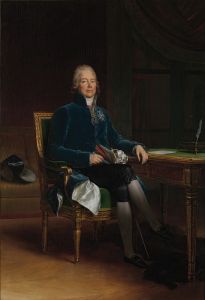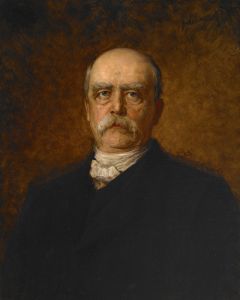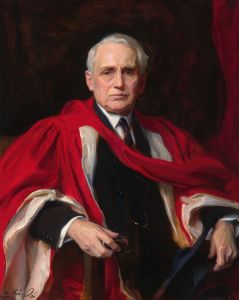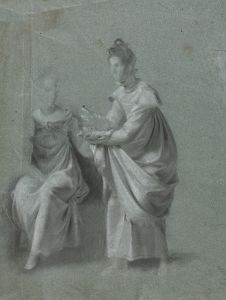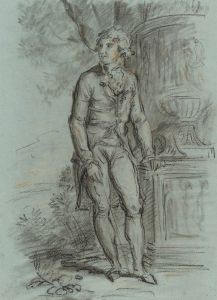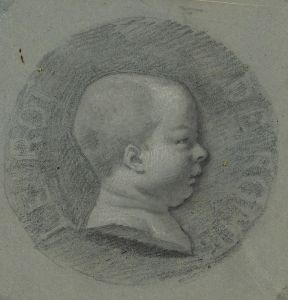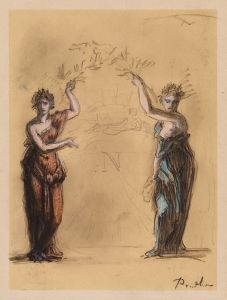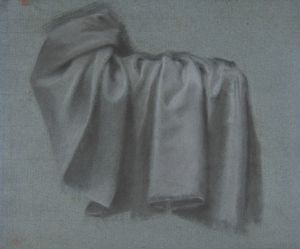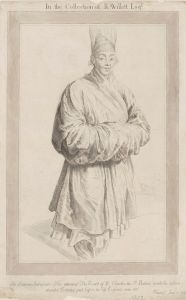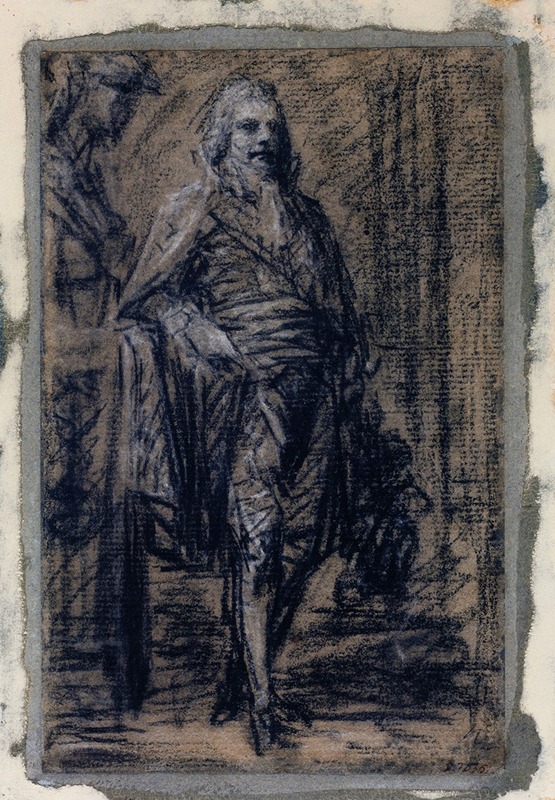
Portrait de Charles Maurice de Talleyrand
A hand-painted replica of Pierre-Paul Prud'hon’s masterpiece Portrait de Charles Maurice de Talleyrand, meticulously crafted by professional artists to capture the true essence of the original. Each piece is created with museum-quality canvas and rare mineral pigments, carefully painted by experienced artists with delicate brushstrokes and rich, layered colors to perfectly recreate the texture of the original artwork. Unlike machine-printed reproductions, this hand-painted version brings the painting to life, infused with the artist’s emotions and skill in every stroke. Whether for personal collection or home decoration, it instantly elevates the artistic atmosphere of any space.
Pierre-Paul Prud'hon, a renowned French painter, is celebrated for his unique style that blends elements of Neoclassicism and Romanticism. One of his notable works is the "Portrait of Charles Maurice de Talleyrand," which captures the likeness of one of France's most influential diplomats. Charles Maurice de Talleyrand-Périgord, commonly known as Talleyrand, was a significant political figure who played a crucial role in French and European diplomacy during the late 18th and early 19th centuries.
Prud'hon was born in 1758 in Cluny, France, and he developed a distinctive approach to painting that set him apart from his contemporaries. Unlike the strict Neoclassical style that dominated the period, Prud'hon's work often incorporated softer lines and a more emotional depth, which can be seen in his portraits. His ability to convey the psychological complexity of his subjects made him a sought-after portraitist among the elite of his time.
The "Portrait of Charles Maurice de Talleyrand" exemplifies Prud'hon's skill in capturing the essence of his subject. Talleyrand, known for his wit, intelligence, and political acumen, served under several French regimes, including the Ancien Régime, the French Revolution, Napoleon, and the Bourbon Restoration. His ability to navigate the turbulent political landscape of his time earned him a reputation as a shrewd and adaptable statesman.
In the portrait, Prud'hon presents Talleyrand with a dignified and composed demeanor, reflecting his status and influence. The painting likely dates from the early 19th century, a period when Talleyrand was at the height of his political career. Prud'hon's use of light and shadow adds a sense of depth and realism to the portrait, while the subtle details in Talleyrand's expression suggest his complex personality and the weight of his responsibilities.
Prud'hon's work, including this portrait, is characterized by a delicate balance between realism and idealism. He often employed a soft, diffused light that gives his paintings an ethereal quality, setting them apart from the more rigid and formal portraits of the time. This approach not only highlights the physical features of his subjects but also hints at their inner lives, making his portraits deeply engaging.
The "Portrait of Charles Maurice de Talleyrand" is a testament to Prud'hon's mastery of portraiture and his ability to capture the essence of his subjects. It remains an important work in the study of both Prud'hon's artistic legacy and Talleyrand's historical significance. The painting is a valuable piece of cultural heritage, offering insight into the art and politics of early 19th-century France.
Prud'hon's influence extended beyond his lifetime, as his work continued to inspire future generations of artists. His portraits, including that of Talleyrand, are celebrated for their emotional depth and technical skill, reflecting the complex interplay of light, shadow, and human expression. Through his art, Prud'hon has left an indelible mark on the history of portrait painting, and his portrayal of Talleyrand remains a significant example of his contribution to the field.





